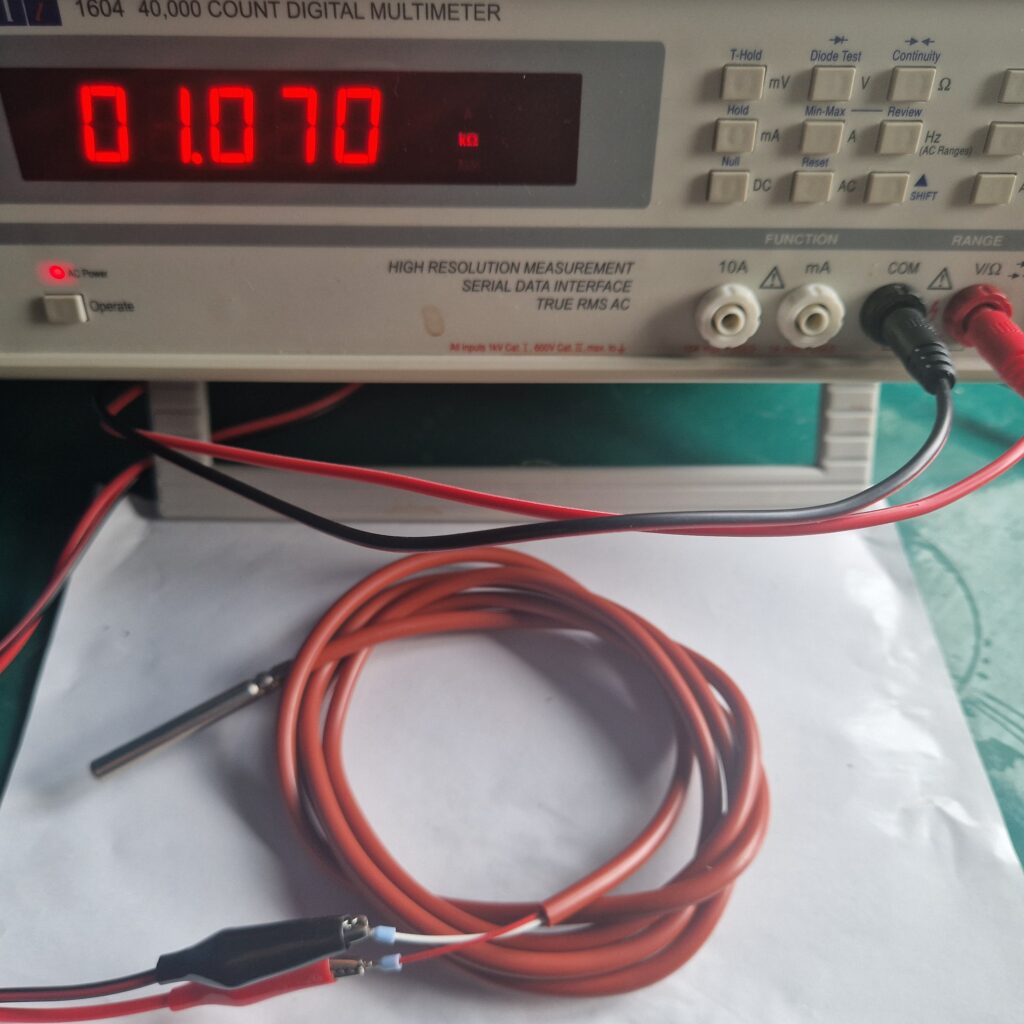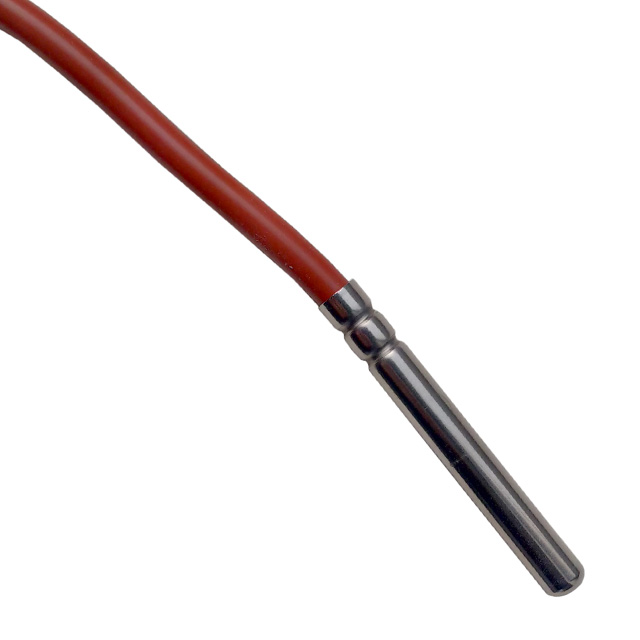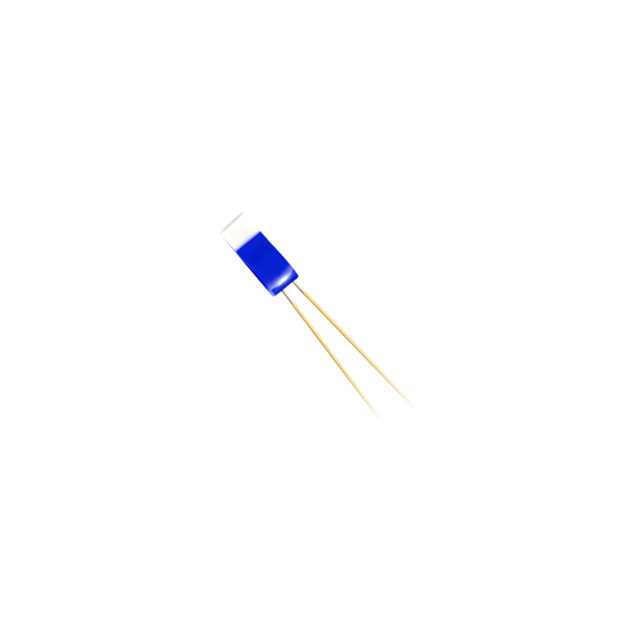PT1000s are the most popular types of the platinum resistance temperature sensor elements. PT1000 get their name from PT meaning platinum and 1000 referring to the resistance measuring 1000Ω at 0°C.
How does the PT1000 Temperature Sensor Work?
A RTD PT1000 Temperature sensor are made from platinum, this material accurately and predictably changes its electrical resistance with the temperature. The PT1000 Resistance and Temperature are directly related to each other, meaning as the Temperature increases the Resistance will increase conversely when the Temperature decreases so does the Resistance.
What is the PT1000 Maximum Temperature Range?
Typically PT1000s Have a Maximum Temperature of 600°C. this is dependant on its construction.
RTD Resistance to Temperature Calculator
Select the correct sensor type PT100 or PT1000
RTD Resistance to Temperature Calculator
How to Measure a PT1000 ?
This is a common method to test if the PT1000 works and to verify the resistance change with temperature change
- Connect the Multimeter leads into the Resistance measuring configuration
- Set the meter to ohms – Auto scale or in the range of 1KΩ or less than 10KΩ
- Connect one probe to one leg/ wire and then connect the other probe to the other leg / wire
- PT1000 have no polarity so either wire or leg can be connected in any order
How to Test a PT1000 Demonstration Picture

As demonstrated in the PT1000 Probe testing image the Resistance Reads 1.070KΩ = 1070Ω
1070Ω can be correlated to a temperature and using the PT1000 Resistance to Temperature calculator 1070Ω =17.96°C
RTD PT1000 Sensor Probes and Elements Experts
We supply and manufacture PT1000 Sensors and Probes, contact us with your requirements and we can despatch a PT1000 the same day or design a new Probe for your application.
Typical PT1000 Circuits
We have great examples and advice for PT1000 circuitry get into contact for application advice
PT100 or PT1000? Which is better?
The choice between PT100 or a PT1000 depends on the electronics design, application and legacy installations.
The difference in reference resistance is demonstrated in the table below
Typically PT100s are used for legacy systems and PT1000 are used for newer and lower power designs
| RTD Temperature Sensor | Resistance at 0°C |
| PT100 | 100Ω |
| PT1000 | 1000Ω |
Advantages of a PT1000 RTD sensor
- Can have longer wires compared to PT100 because the wire resistance is negligible when the sensor resistance is in the 1000s.
- Lower power and current consumption circuits benefit from a PT1000 because it uses less current and the supportive circuitry will also typically use less current.
- PT1000 can be easier to integrate and measure therefore higher resolution can be achieved
PT1000 Sensor Enquiry Form
Conclusion
To conclude, PT1000 temperature sensors are a highly effective and popular solution for precision temperature measurement. Their platinum construction, greater sensitivity, and extended temperature range make them widely used across multiple sectors.
They are more expensive than a thermistor and other temperature sensing elements their overall performance and reliability make them the preferred choice .
By understanding their working principles, differences from PT100 sensors, calibration practices, and key advantages and limitations, users can confidently implement PT1000 sensors to enhance process control, product quality, and safety.



